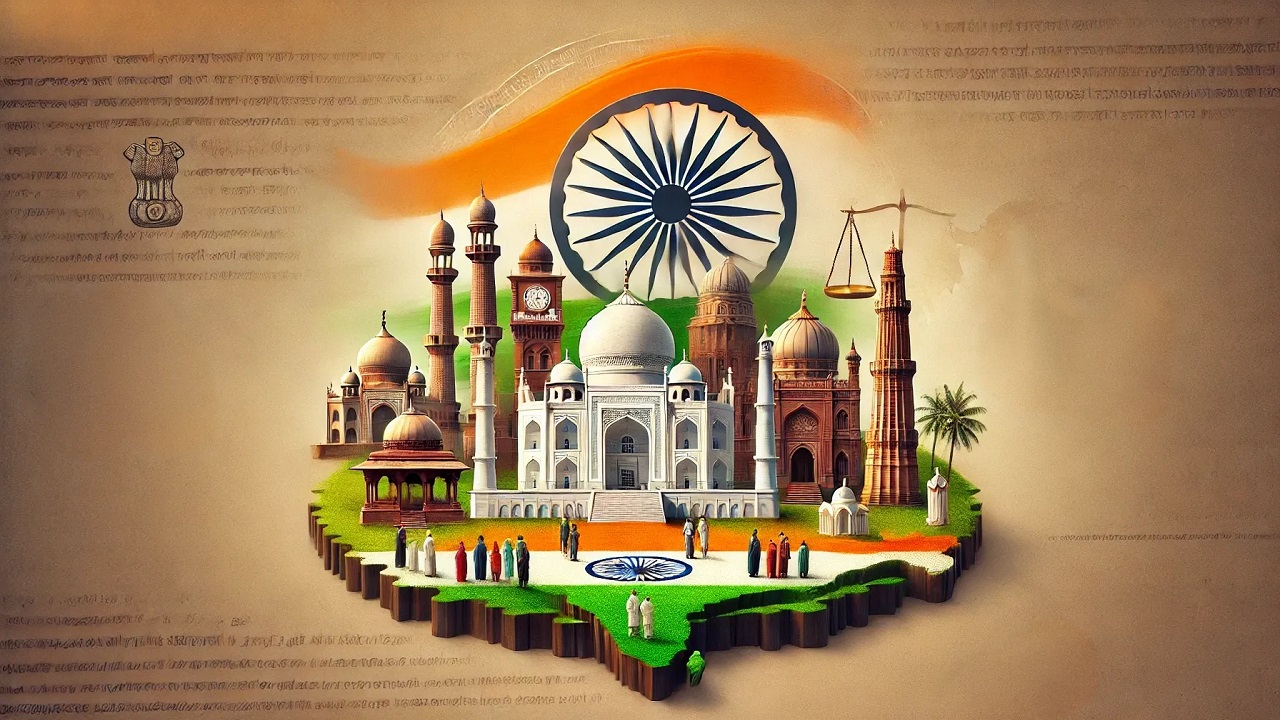Debating Secularism in India: History, Models, and the Road Ahead
Context:
Secularism has become a focal point in recent public and political debates, especially in light of discussions around the Uniform Civil Code (UCC). The term is frequently questioned, both in terms of its interpretation and implementation within India’s multi-religious society. Its role in ensuring religious neutrality, minority rights, and constitutional equality makes it a critical subject in Indian polity.
What is Secularism?
-
Secularism refers to the principle where the state remains neutral in religious matters, does not endorse any official religion, and ensures equal treatment of all citizens, irrespective of their faith.
-
It promotes freedom of religion, non-discrimination, and separation between religion and state.
Origin and Usage:
-
The word ‘secular’ comes from the Latin term ‘saeculum’, meaning a generation, era, or worldly time.
-
Initially, it was used to refer to non-religious or worldly matters.
-
During the Middle Ages, Christians used it to distinguish secular life from religious life.
-
In its modern form, the term was coined by George Jacob Holyoake in 1851.
-
Secularism is now seen as a product of rationalism and modernity.
Importance:
-
It guarantees religious freedom.
-
Prevents state interference or dominance in religious affairs.
-
Ensures equal citizenship rights, especially in diverse and pluralistic societies like India.
Models of Secularism: Global Perspectives
England – The Anglican Church is the official religion, but the state ensures equal rights and religious freedom.
Ireland – The preamble mentions Christianity, but the state cannot favor or discriminate based on religion.
Greece – The Orthodox Church is dominant, yet equality and religious freedom are protected by the constitution.
Pakistan – Islam is the state religion, but minorities are given rights for cultural and religious development, and political representation.
Sri Lanka – Buddhism is given primacy, but freedom to adopt any religion is guaranteed, and personal laws are allowed for minorities.
India – The state has no official religion and follows the principle of equal respect for all faiths, reflecting its multi-religious character.
Western vs Indian Models of Secularism
Western Model:
-
Embodies a negative concept of secularism.
-
Advocates for complete separation of religion and state.
-
Religion is excluded from public affairs.
-
Followed in countries like the United States and France.
Indian Model:
-
Based on a positive concept, known as "principled distance".
-
Allows the state to intervene in religious matters when necessary for reform, equality, and minority protection.
-
Seeks to balance religious freedom with social justice.
Evolution of Secularism in India
Ancient Roots:
-
Emperor Ashoka’s Rock Edicts promoted religious tolerance and coexistence.
-
Rock Edict 7 – Advocated that all religions should reside everywhere, promoting self-restraint and purity of heart.
-
Rock Edict 12 – Discouraged glorification of one’s own religion and condemnation of others.
-
During Freedom Struggle:
-
Secularism was integral to the Indian independence movement.
-
1928 Motilal Nehru Report – Proposed no state religion and no religious discrimination.
-
1931 Karachi Resolution – Called for state neutrality in religion.
-
1944 Hindu Mahasabha Constitution Draft – Stated explicitly that there would be no state religion.
-
Post-Independence Developments:
-
Supreme Court in Kesavananda Bharati Case (1973) held that secularism is a part of the basic structure of the Constitution.
-
42nd Constitutional Amendment Act (1976) added the word ‘secular’ to the Preamble.
-
Then Prime Minister Indira Gandhi justified this inclusion to reinforce India’s commitment to social justice and religious equality.
Contemporary Challenges to Secularism
-
Political Misuse – Growing use of secularism for vote-bank politics and communal polarization.
-
Hate Speech and Intolerance – Rise in religiously motivated violence and hate speech, affecting harmony.
-
Public Misconceptions – Misbelief that secularism gives special privileges to minorities.
-
In reality, it ensures equal autonomy for all religions and prevents theocratic dominance.
-
-
Concerns over Inclusion in Constitution – Ongoing debate on whether the term ‘secular’ should remain in the Preamble.
-
Organizations like RSS have demanded a review of secularism-related provisions.
-
Way Forward
-
Reaffirm State Neutrality – The state must continue to maintain neutrality and not promote any religion.
-
Promote Religious Harmony – Reinforce principles of mutual respect and coexistence, as reflected in Ashokan ideals and constitutional values.
-
Positive Secularism – Encourage a model that ensures respect for all religions, without favoritism or interference by the state.



_(26).jpg)
Comments (0)